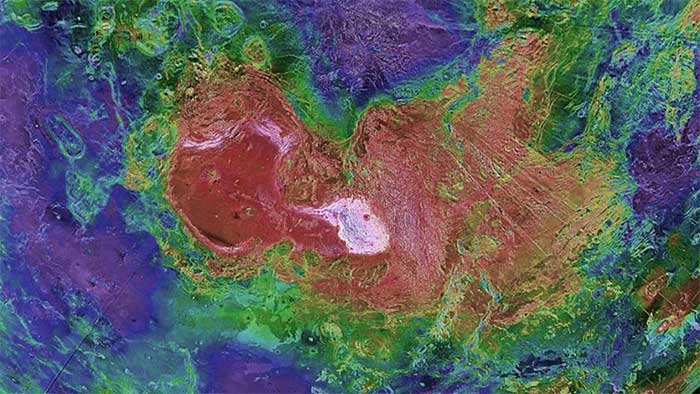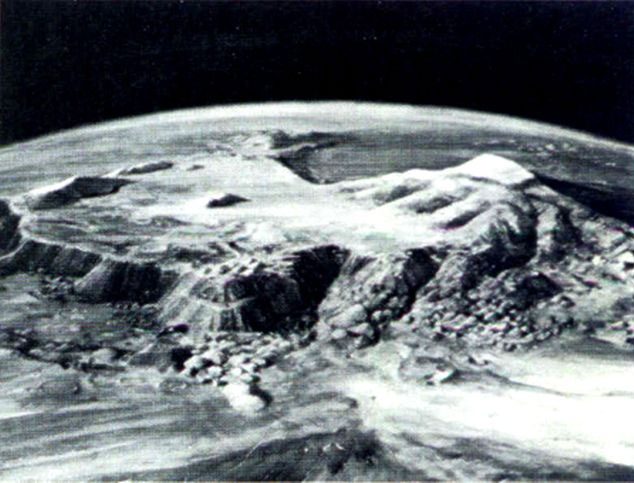Australian scientists have reported feeling “truly puzzled” by their latest findings on a planet that NASA believes was once very similar to Earth.
“This research challenges our understanding of how planets evolve,” said geologist Fabio Capitanio from Monash University in Australia to Live Science.
The recent study published by Dr. Capitanio and his colleagues in the journal Nature Geoscience reveals that the oldest rock formations on Venus may have been created through processes remarkably similar to those that formed Earth’s earliest continents.

The Ishtar Terra region of the nearest planet to Earth, where scientists made their puzzling discovery – (Photo: NASA).
“We did not expect that Venus, with surface temperatures scorching at 460°C and no plate tectonics, could possess such complex geological features,” Dr. Capitanio added.
Earth’s crust is quite complex compared to other planets. It is not seamless but is divided into many pieces, known as tectonic plates.
These crustal plates rest loosely on the surface, capable of rubbing against each other, sliding underneath one another, and carrying continents and oceans that continuously shift above.
This is why continents and oceans throughout Earth’s history have frequently changed shape, forming supercontinents and superoceans before breaking apart.
The oldest parts of Earth’s continental crust are regions referred to as “cratons”, which are areas where older, denser, and harder rocks exist within the tectonic plates that carry continents.
Approximately 35 cratons have been identified worldwide, and scientists believe they represent the first formations of continents, pushing up the molten interior of primitive Earth billions of years ago during the Archean era.
These cratons acted like the seeds of continents. When this deep material reached the surface, it solidified and provided a foothold for other continental materials to gradually develop.
This time, the Australian scientists utilized an intriguing dataset from NASA’s Magellan spacecraft, which previously employed radar probes to map the planet’s surface in detail.
They focused on a tesserae region known as Ishtar Terra, the largest highland on Venus. Tesserae means “mosaic tiles” in Latin, referring to unusual, complex geological features embedded within the planet’s relatively monotonous crust.
The findings indicate that the tesserae of Venus formed in a manner identical to how cratons developed on Earth.

3D graphic representation of Ishtar Terra – (Photo: ESO).
According to the authors, this discovery provides an intriguing new perspective on Venus and its potential connections to early Earth, supporting the hypothesis that the two planets were formed as twin siblings ready to harbor life.
Indeed, along with Earth and Mars, Venus also lies within the Goldilocks zone of the Solar System.
New evidence suggests it may have perfectly begun its “life” like Earth, poised for continental formation and possibly complex plate tectonics.
Previous studies have also indicated that the extreme greenhouse effect and slow rotation rendered the environment inhospitable only after Venus had reached a certain age.
The reason it transformed into Earth’s “evil twin” remains a mystery.


















































